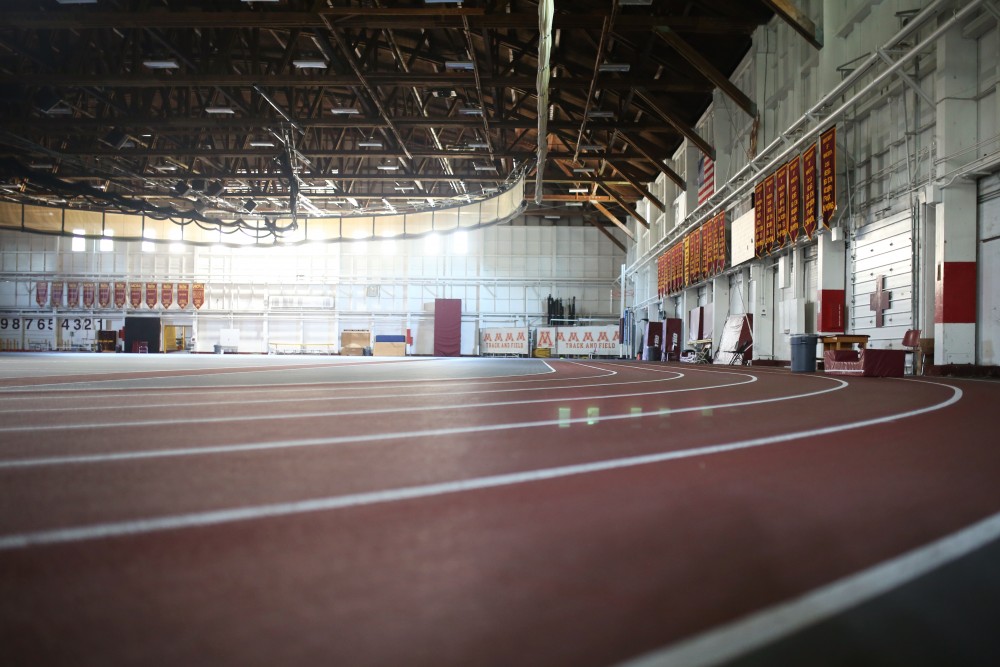A long-awaited facelift is slated for the University of Minnesota Field House, completely altering the exterior façade and bringing updates to the inside.
A $7.4 million renovation for the Field House will replace the asbestos-filled exterior panels, create new ventilation, add windows and completely overhaul of the indoor track and turf flooring. The design process is expected to be completed this month, with construction beginning spring of next year.
“It’s such a large presence on the campus and it’s pretty mundane right now,” said Marc Partridge, interim university architect with the University’s Capital Project Management.
The current exterior panels are made of Cemesto, a fireproof material that contains asbestos. While Partridge said the asbestos is encapsulated within the panels and is not a health concern, the University wants to remove the material from campus regardless.
As part of the renovation, the team plans to add panels that will bring more natural light into the building. The added 80,000 square feet of new flooring will bring the space up to NCAA-level standards for track and field competitions.
The upgrades are funded primarily through last legislative session’s state bonding bill, with $5.2 million allocated through Higher Education Asset Preservation and Repair funding. The rest of the funding comes from the University’s Recreation and Wellness department and Facilities Management departments. Student fees will assist with funding for the track surface, said Luke Day, operations manager for University Recreation and Wellness.
The Field House, built in the early 1900s as an airplane hangar in Washington state, has received no major exterior rework since it was moved to the University campus in 1949. Updates have been in discussion for years, with the last major renovation being a refurbished 200-meter, six-lane track completed in 2006.
“I just think it’s really past due to get this building some love,” Partridge said. “And I think it’s going to be a really nice addition, both to University Avenue… and the building itself.”
Michael Fogarty, an officer of the Minnesota Running Club, said he has not noticed any issues with the track surface as a recreational user.
“They want to keep the facility state-of-the-art. It’s a Big Ten school so you’re hosting a lot of big meets, so I understand the desire,” Fogarty said. “When you start talking maybe some of those D-1 athletes… maybe they would start pointing out [issues].”
He said the club would likely practice outdoors during the renovations, or seek out other local facilities with availability.
The construction is expected to begin in April of 2019 and run through the middle of fall 2019 to accommodate student groups that use the facility.








